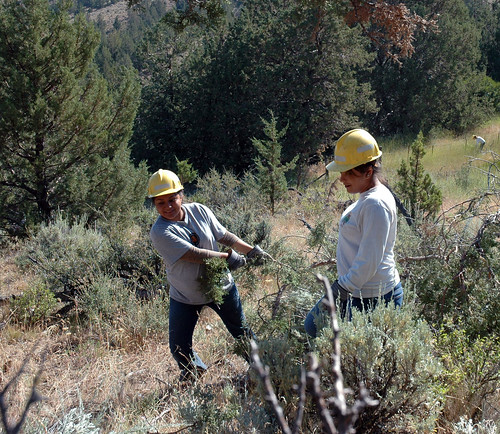
If you’re a student who likes fresh air, scenic vistas, hiking and camping, the U.S. Forest Service might have the perfect job for you.
This year, some units of the Forest Service have been hosting one-day recruiting fairs that teach high school and college students how to apply for upcoming summer jobs with the government.
In one example, about 30 hopeful candidates met in downtown Seattle. Staffers from the Forest Service taught students tips to make a resume shine and how to ace an interview. The session also gave the hopefuls an opportunity to develop professional relationships and networking with potential employers. During the meeting, students who have worked for the Forest Service shared their experiences working as guides, building trails or fighting fires.
Nik Vasquez, 21, of Seattle, talked about working on the Mt. Baker-Snoqualmie National Forest for three summers where he began on a trail crew.

Vasquez worked 10-hour days maintaining trails, removing fallen trees, fixing water drainage, repairing trail paths and brushing out shrubs and branches. His typical work week began by backpacking five to seven miles to the trail, setting up a base camp, accessing damage and clearing away downed trees or branches.
“You quickly learn how to use a Pulaski, a shovel and a grub hoe, to fix the trails,” said Vasquez. “I love being out there. It is the simple things: fresh air, mountain lakes, fishing for dinner, exploring mountain peaks, relaxing by the fire. Working outside is better than a 9-to-5 job.”
During Vasquez’s second year on the Forest Service trail crew he began training to fight wildfires. The next year he was selected for a position on an initial attack crew.
His stint on the trail crew gave Vasquez the training but didn’t quite prepare him for the long hours needed to fight fires. His most memorable experience was fighting the Waldo Canyon Fire in Colorado Springs last year.
“At a fire assignment you work long days, and you can be gone for months,” he said.
But one of the bonuses for working on the fire crew is the pay, which he is using to pay for his college tuition.
Vasquez is now majoring in engineering and physics at Loyola University in New Orleans, La. This summer he will take a break to return home and hike the Pacific Crest National Scenic Trail, a trail he learned about from those summer jobs.
“There are so many peaks I want to climb along the way,” he said.
Annually, the Forest Service and its conservation partners hire more than 3,000 people for summer positions that involve work such as reducing the impacts of climate change on the nation’s natural resources, empowering Native American communities, building trails, enhancing wildlife habitat, and improving and restoring cultural and historic landmarks.



